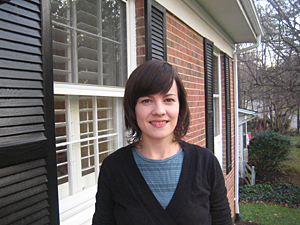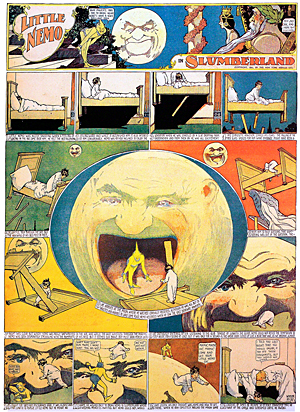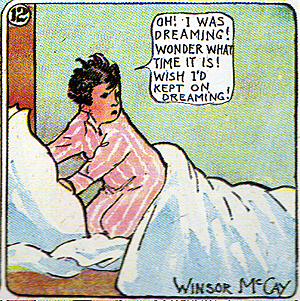ADVERTISEMENT
- Rozovsky wins prestigious NSF Early Career Award
- UD students meet alumni, experience 'closing bell' at NYSE
- Newark Police seek assistance in identifying suspects in robbery
- Rivlin says bipartisan budget action, stronger budget rules key to reversing debt
- Stink bugs shouldn't pose problem until late summer
- Gao to honor Placido Domingo in Washington performance
- Adopt-A-Highway project keeps Lewes road clean
- WVUD's Radiothon fundraiser runs April 1-10
- W.D. Snodgrass Symposium to honor Pulitzer winner
- New guide helps cancer patients manage symptoms
- UD in the News, March 25, 2011
- For the Record, March 25, 2011
- Public opinion expert discusses world views of U.S. in Global Agenda series
- Congressional delegation, dean laud Center for Community Research and Service program
- Center for Political Communication sets symposium on politics, entertainment
- Students work to raise funds, awareness of domestic violence
- Equestrian team wins regional championship in Western riding
- Markell, Harker stress importance of agriculture to Delaware's economy
- Carol A. Ammon MBA Case Competition winners announced
- Prof presents blood-clotting studies at Gordon Research Conference
- Sexual Assault Awareness Month events, programs announced
- Stay connected with Sea Grant, CEOE e-newsletter
- A message to UD regarding the tragedy in Japan
- More News >>
- March 31-May 14: REP stages Neil Simon's 'The Good Doctor'
- April 2: Newark plans annual 'wine and dine'
- April 5: Expert perspective on U.S. health care
- April 5: Comedian Ace Guillen to visit Scrounge
- April 6, May 4: School of Nursing sponsors research lecture series
- April 6-May 4: Confucius Institute presents Chinese Film Series on Wednesdays
- April 6: IPCC's Pachauri to discuss sustainable development in DENIN Dialogue Series
- April 7: 'WVUDstock' radiothon concert announced
- April 8: English Language Institute presents 'Arts in Translation'
- April 9: Green and Healthy Living Expo planned at The Bob
- April 9: Center for Political Communication to host Onion editor
- April 10: Alumni Easter Egg-stravaganza planned
- April 11: CDS session to focus on visual assistive technologies
- April 12: T.J. Stiles to speak at UDLA annual dinner
- April 15, 16: Annual UD push lawnmower tune-up scheduled
- April 15, 16: Master Players series presents iMusic 4, China Magpie
- April 15, 16: Delaware Symphony, UD chorus to perform Mahler work
- April 18: Former NFL Coach Bill Cowher featured in UD Speaks
- April 21-24: Sesame Street Live brings Elmo and friends to The Bob
- April 30: Save the date for Ag Day 2011 at UD
- April 30: Symposium to consider 'Frontiers at the Chemistry-Biology Interface'
- April 30-May 1: Relay for Life set at Delaware Field House
- May 4: Delaware Membrane Protein Symposium announced
- May 5: Northwestern University's Leon Keer to deliver Kerr lecture
- May 7: Women's volleyball team to host second annual Spring Fling
- Through May 3: SPPA announces speakers for 10th annual lecture series
- Through May 4: Global Agenda sees U.S. through others' eyes; World Bank president to speak
- Through May 4: 'Research on Race, Ethnicity, Culture' topic of series
- Through May 9: Black American Studies announces lecture series
- Through May 11: 'Challenges in Jewish Culture' lecture series announced
- Through May 11: Area Studies research featured in speaker series
- Through June 5: 'Andy Warhol: Behind the Camera' on view in Old College Gallery
- Through July 15: 'Bodyscapes' on view at Mechanical Hall Gallery
- More What's Happening >>
- UD calendar >>
- Middle States evaluation team on campus April 5
- Phipps named HR Liaison of the Quarter
- Senior wins iPad for participating in assessment study
- April 19: Procurement Services schedules information sessions
- UD Bookstore announces spring break hours
- HealthyU Wellness Program encourages employees to 'Step into Spring'
- April 8-29: Faculty roundtable series considers student engagement
- GRE is changing; learn more at April 15 info session
- April 30: UD Evening with Blue Rocks set for employees
- Morris Library to be open 24/7 during final exams
- More Campus FYI >>
8:39 a.m., Dec. 22, 2009----Early comic strip creator and pioneer in film animation Winsor McCay joined icons of American literature and culture -- including Theodore Dreiser, Walt Whitman and Buffalo Bill Cody -- in the acclaimed book A New Literary History of America thanks to an essay by University of Delaware art history graduate student Katherine Roeder.
The book, edited by author and critic Greil Marcus and Harvard University professor Werner Sollors, has been selected as one of the 10 “Big and Beautiful: Best Gift Books of 2009” by John McAlley of National Public Radio.
“Through freshly penned and eccentrically focused essays,” the book “ventures to remap the expanse of American history through five centuries of literary and cultural landmarks,” McAlley wrote.
“I am thrilled to be included in the book,” Roeder said. “It is a testimony to McCay and his creativity and contributions to popular American culture.”
Her essay is entitled “15 October 1905, Little Nemo Sets off for Slumberland: The Comic Strip Wakes Up.”
McCay is best known for his color comic strip, “Little Nemo in Slumberland,” about a small boy and his fantastic dream adventures, which ran in the New York Herald and the New York American between 1905 and 1914.
Later McCay created an animated film, “Gertie the Dinosaur.” Gertie is credited as being the first animated cartoon character and involved thousands of hand drawn frames. McCay took Gertie on the road to perform in vaudeville.
Roeder's co-advisers are Margaret Werth, UD associate professor of art history, and Michael Leja, formerly at UD and now at the University of Pennsylvania.
“Kerry is a very accomplished graduate student,” Werth said. “McCay was an incredibly talented artist and introduced a striking new visual language to the comic strip. In her dissertation Kerry is situating his work within the broader context of American culture at the turn of the century, including amusement parks, world's fairs, circuses, and department stores.”
There are very few other graduate students in the book. Being invited to write the essay was a matter of being the right person at the right time, Roeder said. Leja was asked to serve on the editorial board for A New Literary History of America and also contributed an essay. When it was decided to include McCay in the book, Leja said he had a graduate student who was writing her dissertation on him and recommended Roeder.
Although Roeder drew from her research and dissertation, she said the essay is not a scholarly work but is written as a narrative for a broader audience. She enjoyed working with the editors and getting their feedback and suggestions.
“Little Nemo epitomizes childhood fantasy and imagination, and McCay was an important influence on Walt Disney and Maurice Sendak. Although comic strips rarely receive recognition, Little Nemo demonstrates McCay's artistry, his imagination, and prolific talent,” Roeder said. “'Gertie the Dinosaur' is an amazing work. The stack of drawings it took for the animation is as tall as McCay himself.”
A graduate of Trinity College in Washington, D.C., Roeder has a master's degree from the University of Maryland at College Park. She has served as a research fellow at the Corcoran Gallery of Art and as a curatorial staff assistant at the National Gallery of Art. She has received a Sewell C. Biggs Dissertation Writing Award, a Smithsonian Pre-doctoral Fellowship, and a Swann Fellowship for the study of caricature and cartoon art from the Library of Congress.
Article by Sue Moncure





